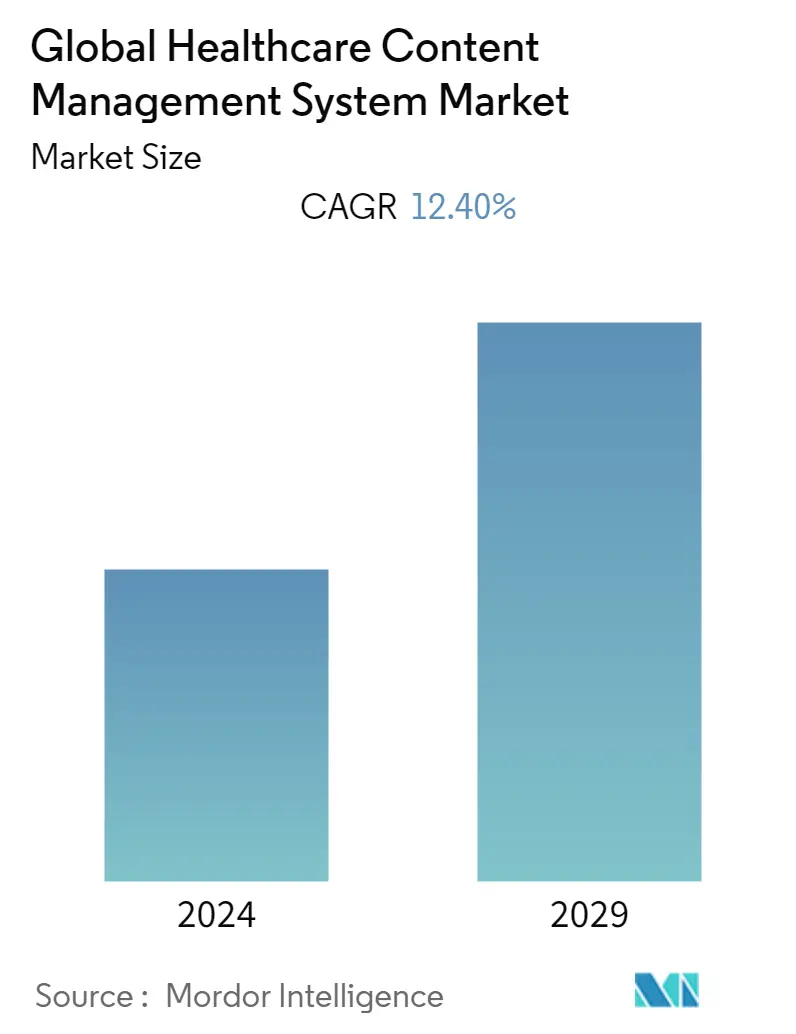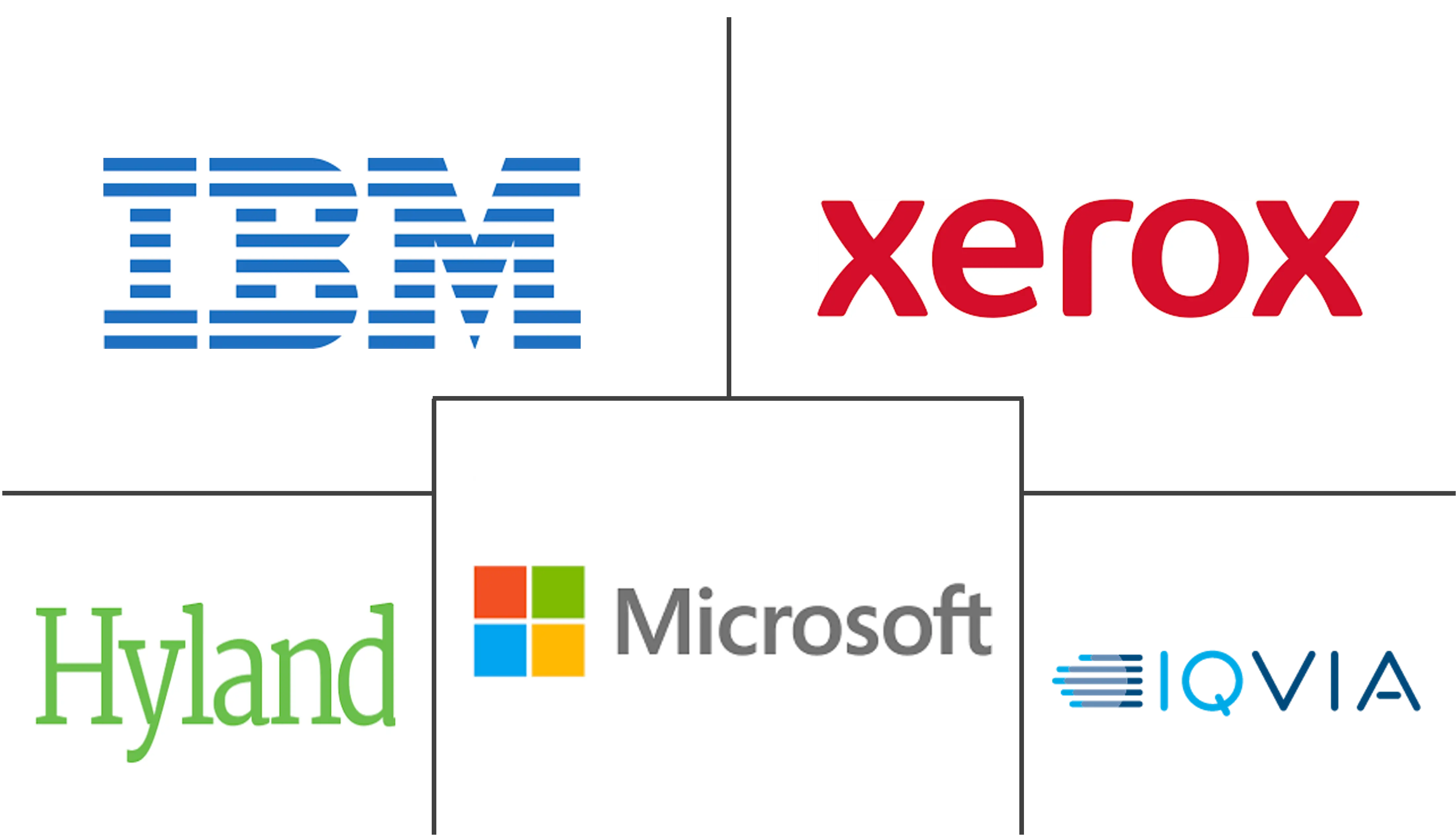Market Size of Global Healthcare Content Management System Industry

| Study Period | 2019 - 2029 |
| Base Year For Estimation | 2023 |
| CAGR | 12.40 % |
| Fastest Growing Market | Asia-Pacific |
| Largest Market | North America |
| Market Concentration | Medium |
Major Players
*Disclaimer: Major Players sorted in no particular order |
Need a report that reflects how COVID-19 has impacted this market and its growth?
Healthcare Content Management System Market Analysis
The healthcare content management system market is expected to register a CAGR of 12.4% over the forecast period (2022-2027).
The COVID-19 pandemic has benefited the healthcare content management systems industry by increasing the need for an automated workflow to manage patient documents and data. The need to have data stored digitally for easier management and retrieval has increased as a result of COVID. It facilitates the loading of all content related to a patient and the content of all patients suffering from a particular disease. According to the data updated in April 2020 by the World Health Organization, from January to April 2020, a total of 3,059,642 people were infected with COVID, with 211,028 deaths. As a result, healthcare content management is extremely useful for storing and retrieving data to analyze the impact of COVID on the population. The COVID-19 pandemic had a positive impact on the market due to a rise in the need for content management as companies shifted their business online.
The increase in the need to manage the huge influx of data for data and resource management and the rise in technological advancement are the key drivers of the healthcare content management system market. Also, the increase in the number of hospitals and clinics will result in high demand for healthcare content management systems. For example, according to data released by the American Hospital Association data updated in July 2022, there are about 6,093 hospitals in the United States. According to the same source, there are about 2,960 non-governmental non-profit community hospitals, 1,228 investor-owned (for-profit) community hospitals, 951 state and local government community hospitals, 207 federal government hospitals and 635 non-federal psychiatric hospitals.
Healthcare content management systems improve the efficiency of healthcare providers by saving time through automated workflow. The industry is growing due to better solutions and modernized technologies, as well as a growing awareness of the need for a modern healthcare system and better data management, leading to more healthcare investment in technology than ever before. This has led to the deployment of more content management systems for healthcare than before and is the main reason for the growing market demand for a content management system for healthcare.
For example, in August 2021, the Delhi government plans to launch a cloud-based Health Information Management System (HIMS) that will provide eHealth cards and book online appointments with doctors at government hospitals. In March 2022, Microsoft also announced advancements in healthcare and life sciences cloud technologies with the general availability of Azure Health Data Services and an update to Microsoft Cloud for Healthcare. Also, in December 2021, Oracle acquired Cerner, which is one of Oracle's largest acquisitions to date. The acquisition is expected to improve its cloud platform in the industry.
However, the security concerns related to the healthcare content management system are expected to restrain market growth over the forecast period.
